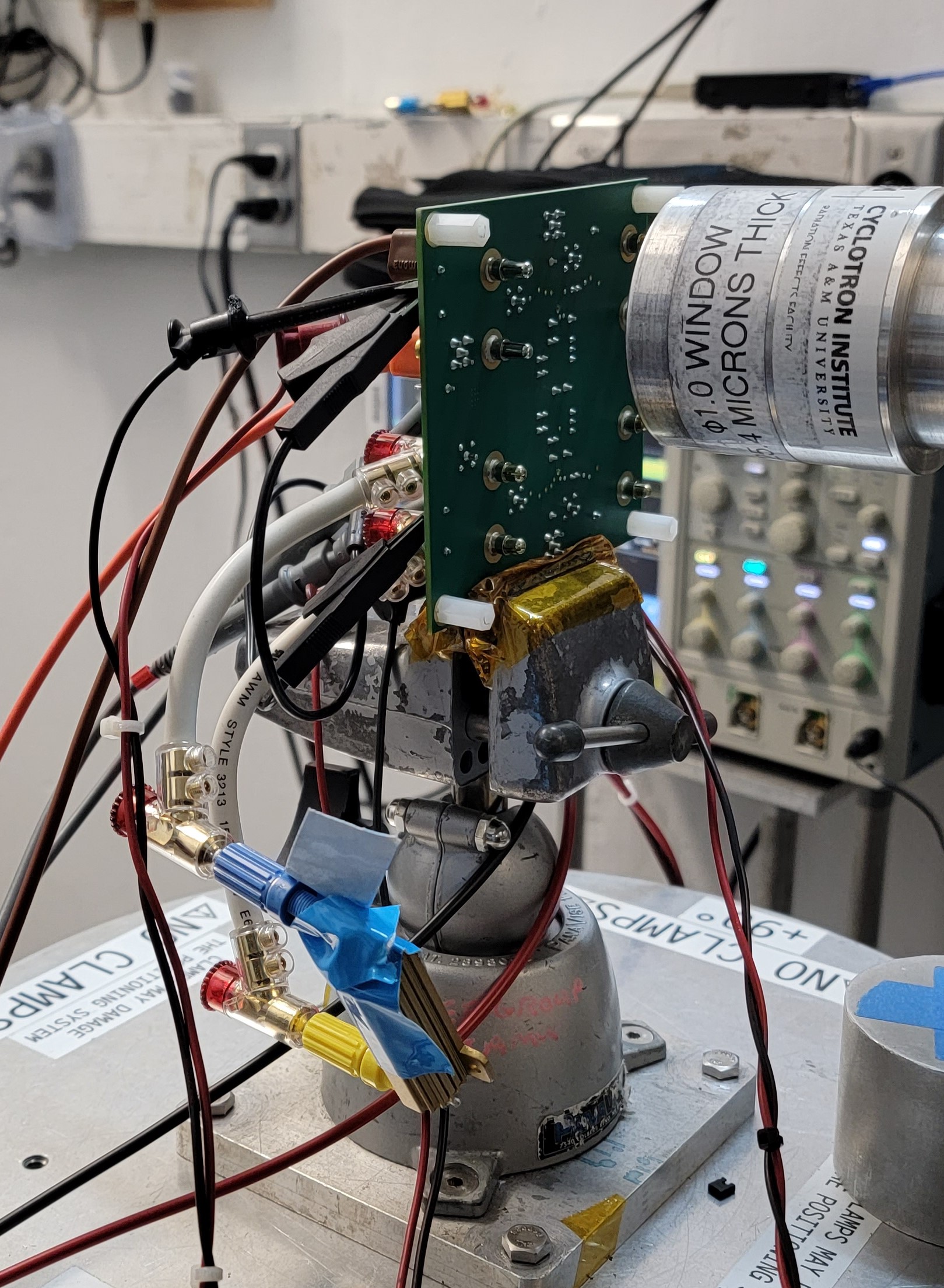SLVK117 October 2022 TPS7H2221-SEP
- Single-Event Effects Test Report of the TPS7H2221-SEP Load Switch
- Trademarks
- 1 Introduction
- 2 Single-Event Effects (SEE)
- 3 Device and Test Board Information
- 4 Irradiation Facility and Setup
- 5 Depth, Range and LETEFF Calculation
- 6 Test Setup and Procedures
- 7 Destructive Single-Event Effects (DSEE)
- 8 Single-Event Transients (SET) and Single Event Functional Interrupt (SEFI)
- 9 Event Rate Calculations
- 10Summary
- A Appendix: Total Ionizing Dose from SEE Experiments
- B Appendix: References
4 Irradiation Facility and Setup
The heavy-ion species used for the SEE studies on this product were provided and delivered by the TAMU Cyclotron Radiation Effects Facility using a superconducting cyclotron and an advanced electron cyclotron resonance (ECR) ion source. At the fluxes used, ion beams had good flux stability and high irradiation uniformity over a 1-in diameter circular cross-sectional area for the in-air station. Uniformity is achieved by magnetic defocusing. The flux of the beam is regulated over a broad range spanning several orders of magnitude. For the bulk of these studies, ion flux of 104 or 105 ions/cm2·s were used to provide heavy-ion fluences of 3 x 106 and 1 x 107 ions/cm2.
For the experiments conducted on this report, 129Xe and 109Ag ions at angle of incidence of 0° for an LETEFF of 42.7 and 46.8 MeV·cm2/mg respectively were used. The total kinetic energies of 129Xe and 109Ag in the vacuum are 3.197 GeV (25 MeV/nucleon) and 1.634 GeV (15 MeV/nucleon) respectively. Ion uniformity for these experiments was between 89 and 98%.
Figure 4-1 shows the TPS7H2221-SEP test board used for the experiments at the TAMU facility. The beam port has a 1-mil Aramica window to allow in-air testing while maintaining the vacuum within the accelerator with only minor ion energy loss. Because the devie is a flip chip a hole was drilled in the "back" of the board so that the die could be irradiated during testing. The in-air gap between the device and the ion beam port window was maintained at 40 mm for all runs.
 Figure 4-1 Photograph of the TPS7H2221-SEP Evaluation Board at the Texas A&M Cyclotron
Figure 4-1 Photograph of the TPS7H2221-SEP Evaluation Board at the Texas A&M Cyclotron